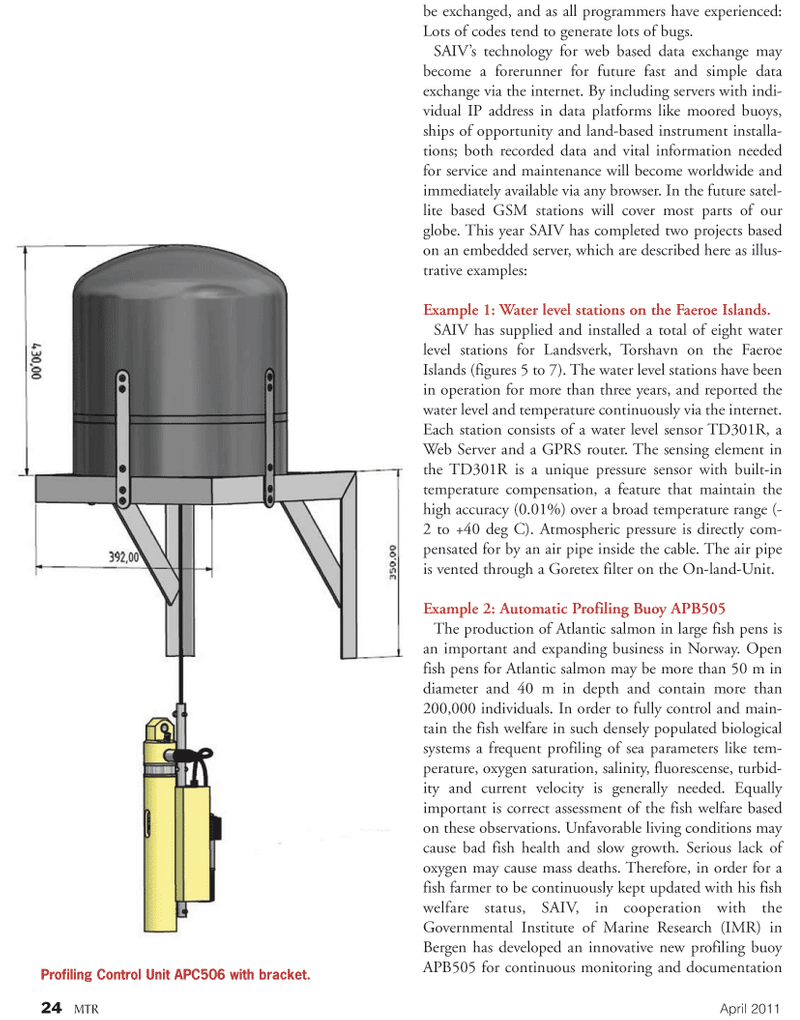
Page 24: of Marine Technology Magazine (April 2011)
Oil & Gas SubSea Monitoring
Read this page in Pdf, Flash or Html5 edition of April 2011 Marine Technology Magazine
be exchanged, and as all programmers have experienced:
Lots of codes tend to generate lots of bugs.
SAIV’s technology for web based data exchange may become a forerunner for future fast and simple data exchange via the internet. By including servers with indi- vidual IP address in data platforms like moored buoys, ships of opportunity and land-based instrument installa- tions; both recorded data and vital information needed for service and maintenance will become worldwide and immediately available via any browser. In the future satel- lite based GSM stations will cover most parts of our globe. This year SAIV has completed two projects based on an embedded server, which are described here as illus- trative examples:
Example 1: Water level stations on the Faeroe Islands.
SAIV has supplied and installed a total of eight water level stations for Landsverk, Torshavn on the Faeroe
Islands (figures 5 to 7). The water level stations have been in operation for more than three years, and reported the water level and temperature continuously via the internet.
Each station consists of a water level sensor TD301R, a
Web Server and a GPRS router. The sensing element in the TD301R is a unique pressure sensor with built-in temperature compensation, a feature that maintain the high accuracy (0.01%) over a broad temperature range (- 2 to +40 deg C). Atmospheric pressure is directly com- pensated for by an air pipe inside the cable. The air pipe is vented through a Goretex filter on the On-land-Unit.
Example 2: Automatic Profiling Buoy APB505
The production of Atlantic salmon in large fish pens is an important and expanding business in Norway. Open fish pens for Atlantic salmon may be more than 50 m in diameter and 40 m in depth and contain more than 200,000 individuals. In order to fully control and main- tain the fish welfare in such densely populated biological systems a frequent profiling of sea parameters like tem- perature, oxygen saturation, salinity, fluorescense, turbid- ity and current velocity is generally needed. Equally important is correct assessment of the fish welfare based on these observations. Unfavorable living conditions may cause bad fish health and slow growth. Serious lack of oxygen may cause mass deaths. Therefore, in order for a fish farmer to be continuously kept updated with his fish welfare status, SAIV, in cooperation with the
Governmental Institute of Marine Research (IMR) in
Bergen has developed an innovative new profiling buoy
APB505 for continuous monitoring and documentation
Profiling Control Unit APC506 with bracket. 24 MTR April 2011

 23
23

 25
25
